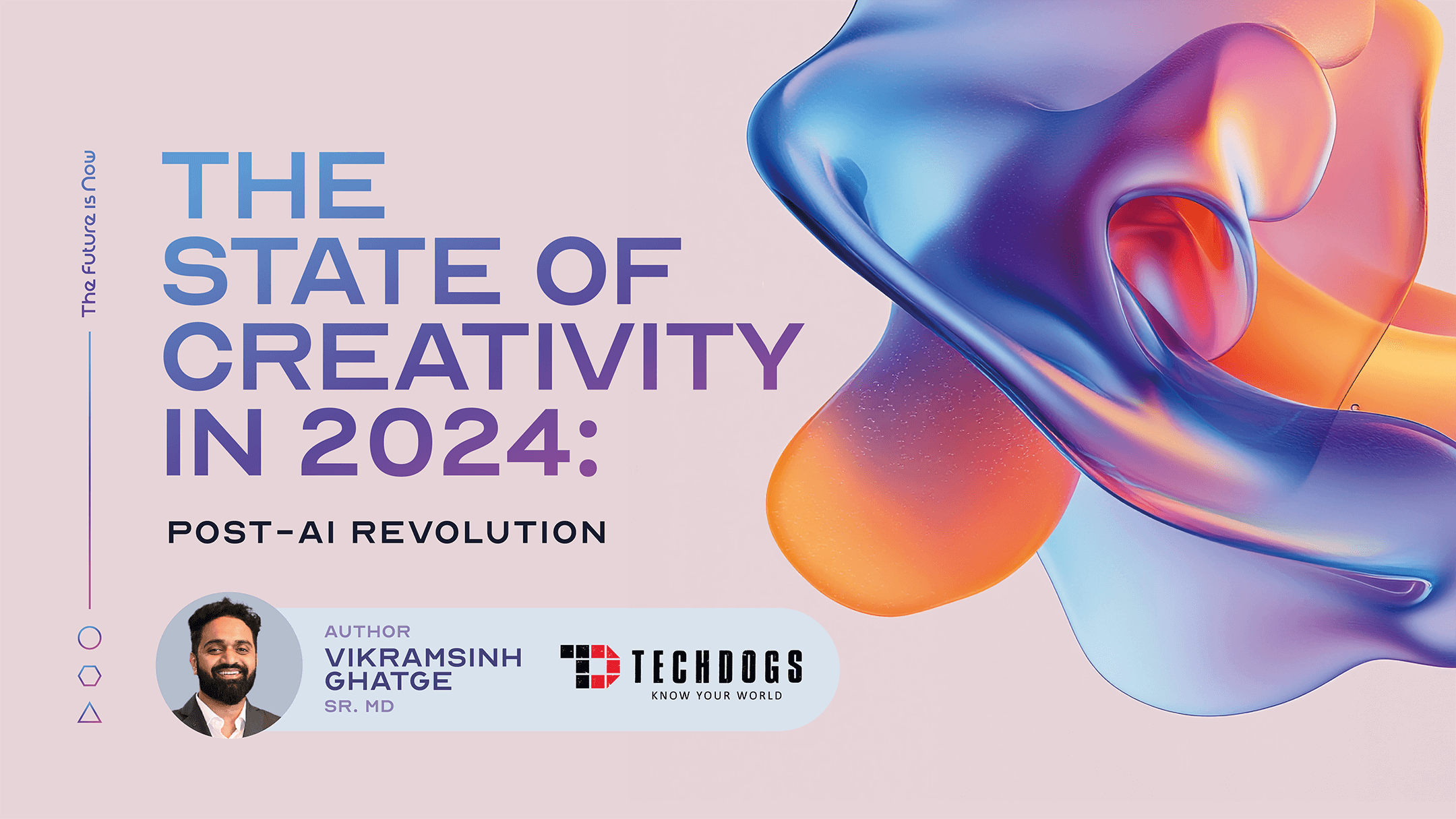TechDogs, a leading technology platform, has recently joined forces with World Future Awards as one of their newest media partners. Renowned for delivering personalized, up-to-date tech content, TechDogs goes beyond being just a news source—it’s a comprehensive guide for professionals aiming to stay competitive in today’s fast-paced digital landscape. With a mission to empower individuals through insights across various sectors including leadership, finance, data science, and technology, TechDogs caters to a global audience across 67 countries, providing millions of readers with the knowledge and tools needed to advance their careers and succeed in business.
Artificial intelligence redefined creativity in 2024. Think about it: AI now handles 44% of creative industry duties, up from 25% three years ago. From $4.5 billion in 2020, the worldwide creative sector AI market is expected to reach $20 billion by 2025. Creative endeavors that took days or weeks are now done in hours thanks to AI tools.
AI-generated content is expected to make up 30% of digital material by year’s end, up from 10% in 2021. Over 60% of graphic designers utilize AI tools like DALL-E and Runway ML, and the music industry has experienced a 300% surge in AI-composed music for commercial use.
These statistics represent a major shift in creativity production, consumption, and value. AI is becoming a creative collaborator, expanding possibilities and redefining creativity.
AI – Creativity Era – Democratization of Creativity
With AI on the rise, we’re stepping into a new era of creativity. But here’s the thing—AI isn’t just a tool; it’s more like a creative partner. Recognizing how AI can enhance, augment, and reshape human creativity is crucial. When used right, AI can open up all sorts of new possibilities.
Some worry that AI might take over human creativity, but the reality is a bit different. Instead of replacing us, AI enhances our creativity. By taking care of the boring, repetitive tasks, AI gives us more time to dive into complex and abstract ideas. It’s like having a brainstorming buddy that offers fresh perspectives and helps refine concepts in ways we might not think of on our own.
One of the most exciting things about AI is how it’s making creativity more accessible to everyone. AI tools are becoming so easy to use that you don’t need formal training to create something amazing. Just as a few years back platforms like Canva and Grammarly empowered people to produce professional-quality work without breaking a sweat. AI Tools like ChatGPT, Adobe FireFly, Runaway, WriteSonic, DALL·E 3– are opening up the creative world to a much broader audience, making it more diverse and inclusive.
AI is revolutionizing marketing. Marketers can create blog posts, social media updates, and ad text in minutes using tools Jasper and Copy.ai. Picture a marketing team launching a new product. AI lets them swiftly develop content for different audiences, optimizing keywords and tone for optimum engagement. This saves time and improves marketing campaigns with less effort. Consider a startup that needs a brand makeover. They leverage AI-powered design tools like Looka and Designhill to produce brand-aligned logos, color schemes, and marketing materials without a large design team.
Opportunities Unleashed by AI
AI can be your creative assistant, confidant, and everything in between—if you want it to be. Think of it as a super-smart buddy who helps you brainstorm ideas, refine your work, and even tackle those pesky creative blocks. Here’s how AI is opening up new doors:
AI tools speed up creative processes. Imagine cutting down hours of work to just a few minutes! It’s like having a magic wand that helps you get things done faster. AI isn’t just a tool; it’s a partner in creativity. It lets us explore new styles and forms of art that we might not have considered before. Think of it as a new paintbrush for your creative canvas.
AI is a massive opportunity to drive more creativity in everything we do at work. But with this power comes questions about authenticity and originality. When AI creates something, who really owns it? Is it the person who programmed the AI, or is it the AI itself? This is a new area of research, and it’s sparking a lot of debates. We need to think about how to protect the originality of human creators while still embracing AI’s potential.
The Future of Creativity in an AI-Driven World
Looking ahead, collaborative creativity between humans and AI will become the norm. Imagine working side-by-side with an AI that can brainstorm ideas, suggest improvements, and even help execute creative projects. This partnership will allow us to push the boundaries of what’s possible, blending human intuition with machine precision.
As AI takes on more routine tasks, our roles in creative fields will evolve. We’ll focus more on nurturing creativity and imagination, while AI handles the grunt work. This shift will free us up to explore new ideas and innovate in ways we never thought possible.
AI will enable a level of personalized creativity that’s never been seen before. Imagine custom-tailored art, music, or literature designed specifically for you. This will make creative experiences more intimate and meaningful, as they resonate on a personal level.
The future of creativity isn’t about replacing humans with machines, but about creating a harmonious partnership where both can thrive.
By Vikramsinh Ghatge
Author Bio
Vikramsinh Ghatge is the Senior Director of Marketing at TechDogs, where he is responsible for leading the company’s marketing strategies, overseeing the development and execution of comprehensive marketing campaigns, and driving brand growth and engagement. With a keen focus on content marketing, digital marketing, and lead generation, Vikram ensures that TechDogs stays at the forefront of the technology publishing industry. He also collaborates closely with sales and product teams to align marketing efforts with business objectives and enhance customer experience.
You can reach the author at vikram@techdogs.com, or www.linkedin.com/in/vikramghatge.







